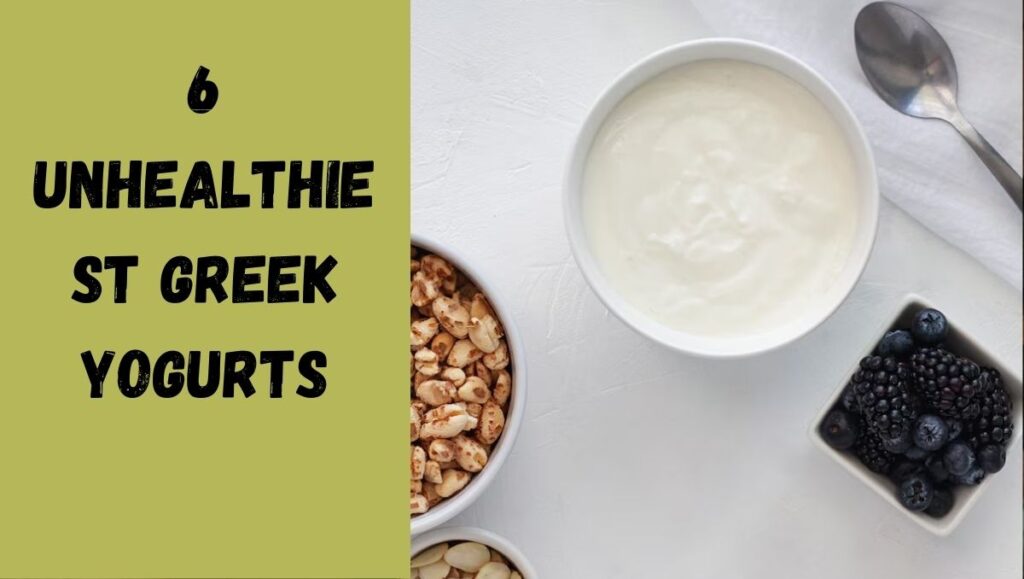Supported by Danone’s intensive marketing initiatives, Activia yogurt is among the most often consumed probiotic yogurts available. Its promises of helping to control digestion and boosting gut flora with its unique probiotic strain, Bifidobacterium animalis DN-173 010 (sometimes branded as DN-173 010/CNCM I-2404) have come to define digestive health for many customers. Though science supports these assertions, the primary question still is: is Activia as healthy as it presents?
Although Activia has probiotic advantages, the whole effect on health depends on various elements including its sugar level, additives, and appropriateness for a particular diet. Though the reality is more complex, many purchase Activia hoping for a digestive miracle. Examining Activia yogurt’s nutritional profile, probiotic qualities, and marketing claims to enable you to decide with knowledge, this article investigates both advantages and disadvantages of this product.
The Probiotic Advantage: What Activia Really Offers
Live germs called bacteria, probiotics help the digestive tract stay healthy when taken in enough doses. Claimed to survive stomach acid and reach the intestines, the particular strain in Activia—Bifidobacterium animalis DN-173 010—may help to balance good bacteria and encourage digestive wellness.
Consistent over several weeks, this strain can aid with constipation symptoms and increase regularity according to scientific studies. As part of a balanced diet, Activia can help those with sporadic digestive problems. It may enhance digestive regularity and aid ease bloating.
Still, the advantages of probiotics can differ greatly among people. Not everyone will feel the same digestive changes since the gut microbiota is unique and complicated. Furthermore affecting efficacy are the live probiotic count in a single serving and their gastrointestinal activity lifetime. Thus, even if Activia’s probiotic count is really good, it is not a magic bullet for digestive problems.
Nutritional Profile: Breaking Down the Facts
A critical component to understanding Activia’s healthfulness lies in its nutritional breakdown. A standard 4-ounce (113g) serving of Activia vanilla yogurt contains approximately:
| Nutrient | Amount per Serving |
|---|---|
| Calories | 90 |
| Total Fat | 1.5 g |
| Saturated Fat | 1 g |
| Sodium | 55 mg |
| Total Carbohydrates | 15 g |
| Sugars | 12 g |
| Protein | 4 g |
This profile reveals a few important points:
- Calories and Fat: Activia is relatively low in calories and fat, making it a reasonable snack or light addition to a meal.
- Protein: Four grams of protein per serving is modest compared to Greek yogurt varieties, which often provide double that amount. Protein is vital for muscle repair, satiety, and overall nutrition.
- Sugar: This is where concerns arise. The 12 grams of sugar per serving is considerable, especially if you consume multiple servings or flavored varieties. Some fruit-flavored Activia yogurts contain even higher sugar levels, sometimes up to 17 grams per serving.
Regularly consuming large quantities of added sugars has been related to bad health effects including higher risk of obesity, type 2 diabetes, heart disease, and dental difficulties. For individuals keeping track of their sugar intake, flavored Activia yogurts lose appeal.
The Sugar Concern: Hidden Health Risks
Many manufactured goods have sugar as their villain; Activia is not an exception. Although it has good probiotics, several variations also include sweets and sugars that can compromise health advantages. Many Activia products’ heavy sugar content begs questions.
Consuming too much sugar can cause surges in blood glucose and insulin, therefore encouraging fat accumulation and raising inflammation all across the body. It can also aggravate metabolic syndrome, a grouping of disorders raising the risk of diabetes and cardiovascular disease.
Sugar can also feed dangerous gut flora, therefore negating the advantages of probiotics. This contradiction means that even if Activia is helping you to increase good bacteria to your system, you may be feeding the bad bacteria sugar at the same time.
If you like Activia, choose the low-sugar or plain forms. These let you get digestive support without sacrificing other areas of your health by offering probiotic advantages free of the unwanted added carbohydrates.
Artificial Additives: What Are You Really Eating?
Along with sugar, certain Activia products use synthetic ingredients including carrageenan and sucralose. Knowing these elements helps one evaluate the general healthiness of the product.
- Sucralose: Several low-calorie or sugar-free Activia products include a non-nutritive artificial sweetener. Although sucralose is FDA-approved and regarded as safe, certain studies indicate it may harm gut bacteria diversity or induce stomach pain in sensitive people.
- Carrageenan: Made from red seaweed, this thickening and stabilizing ingredient enhances yogurt texture. Carrageenan is controversial, though, since some animal studies suggest it can aggravate gastrointestinal problems or inflammation in high doses.
These chemicals might be bad for people trying a natural, clean diet. Although they are usually regarded as safe, the combined impact of ingesting such chemicals from several processed meals is still not entirely known.
Digestive Health Claims: Marketing vs. Reality
Activia presents a strong marketing. Ads highlight better digestion, less bloating, and controlled bowel motions, therefore presenting a health star image. Still, this has not always exactly matched scientific analysis.
The U.S. Federal Trade Commission (FTC) challenged Danone in 2010 for promoting unfounded assertions regarding Activia’s digestive properties. Danone toned back some of its promotional claims and agreed to pay a $21 million settlement.
Though it’s not a definite fix for everyone, scientific studies do confirm that the probiotic strain in Activia helps enhance digestive performance. Results depend on the person’s baseline gut health, food, and lifestyle; the changes usually are small.
Therefore, even although Activia might assist some people with minor stomach problems, it should not be regarded as a therapeutic tool or depended upon just for digestive health.
Suitability for Lactose-Intolerant Individuals
Millions of people worldwide suffer with lactose intolerance, which causes bloating, cramps, and diarrhea following dairy consumption. Selecting the appropriate yogurt might be challenging for those who avoid lactose.
Because some lactose breaks down during fermentation, Activia is easier to digest than ordinary milk. By generating the lactase enzyme, the probiotic bacteria in Activia might also aid lactose digestion be improved.
Activia isn’t lactose-free, either though. While some lactose-intolerant persons may still have symptoms, others may find it mild in little doses. Starting modest will help you to determine tolerance.
If you are very sensitive to lactose, you might wish to search for plant-based alternatives or lactose-free probiotic yogurts that offer comparable digestive benefits without lactose.
Cost Considerations: Is Activia Worth It?
Reflecting the premium placed on its probiotic strain and strong marketing, Activia usually costs more than plain or Greek yogurts. For frequent users, this additional price might mount up over time.
When assessing value, take into account whether you require Activia’s particular probiotic strain or if alternative yogurts or fermented foods can offer comparable advantages at a less expensive price.
Greek yogurts, for instance, frequently have less sugar at a lower cost and more protein along with naturally occurring probiotics. Likewise, cheap substitutes with probiotics are kefir, sauerkraut, and kimchi.
If money is tight, give getting a range of probiotic items first priority above just Activia to improve gut health holistically.
Alternative Probiotic Sources to Consider
If Activia doesn’t fit your needs, lifestyle, or budget, there are many other probiotic-rich foods and supplements available:
- Greek Yogurt: Higher in protein and typically lower in sugar, Greek yogurt also contains live active cultures beneficial for digestion.
- Kefir: A fermented milk drink containing diverse strains of probiotics. It’s often thinner than yogurt but packed with beneficial bacteria.
- Sauerkraut and Kimchi: Fermented vegetables that provide probiotics and fiber, adding variety and flavor to meals.
- Kombucha: Fermented tea that delivers probiotics alongside antioxidants.
Incorporating a range of these foods into your diet can diversify the beneficial bacteria in your gut and contribute to overall health.
Table: Nutritional Comparison of Popular Probiotic Foods (per 100g)
| Food Item | Calories | Protein (g) | Sugar (g) | Probiotic Strains Variety | Notes |
|---|---|---|---|---|---|
| Activia Yogurt | 80-90 | 3.5 – 4 | 10-12 | Single (Bifidobacterium DN-173 010) | Often contains added sugars |
| Greek Yogurt | 59-97 | 10-12 | 4-6 | Multiple strains | High protein, lower sugar |
| Kefir | 40-60 | 3-4 | 4-5 | Diverse strains | Drinkable, tart flavor |
| Sauerkraut | 19 | 1 | 2 | Multiple strains | Rich in fiber and vitamins |
| Kombucha | 30-50 | <1 | 2-5 | Multiple strains | Contains antioxidants |
Is Activia Yogurt Truly Healthy?
For individuals looking for digestive aid, Activia yogurt appeals since it provides a special probiotic strain that could help gut flora and digestion. Its somewhat high sugar level, artificial ingredients, and premium price point, however, call serious questions.
For some, especially those without rigorous sugar limits and who value taste and convenience, Activia can be a useful addition to a balanced diet. Other probiotic sources include Greek yogurt, kefir, or fermented vegetables may be better choices for those trying to cut sugar intake, avoid additives, or save money, though.
Perfect intestinal health cannot be guaranteed by one meal either. The best approach is a diversified diet high in whole nutrients, fermented foods, and fiber together with good lifestyle choices.
FAQs
1. Is Activia suitable for diabetics?
Activia contains added sugars, which can affect blood sugar control. Diabetics should choose plain or low-sugar varieties and monitor their intake carefully, ideally consulting a healthcare professional.
2. Can children safely consume Activia?
Yes, children can eat Activia in moderation. Opt for lower-sugar versions to minimize sugar intake, and ensure it complements a balanced diet.
3. How long should I eat Activia to see digestive benefits?
Studies suggest consistent daily consumption for at least 2-4 weeks may be needed to notice digestive improvements.
4. Are there vegan or dairy-free Activia options?
Currently, Activia mainly offers dairy-based products. Vegan consumers should look for plant-based yogurts with added probiotics.
5. Does cooking or heating Activia destroy its probiotics?
Yes, heating Activia yogurt will kill the live probiotic cultures. To retain probiotic benefits, consume it cold or at room temperature.


